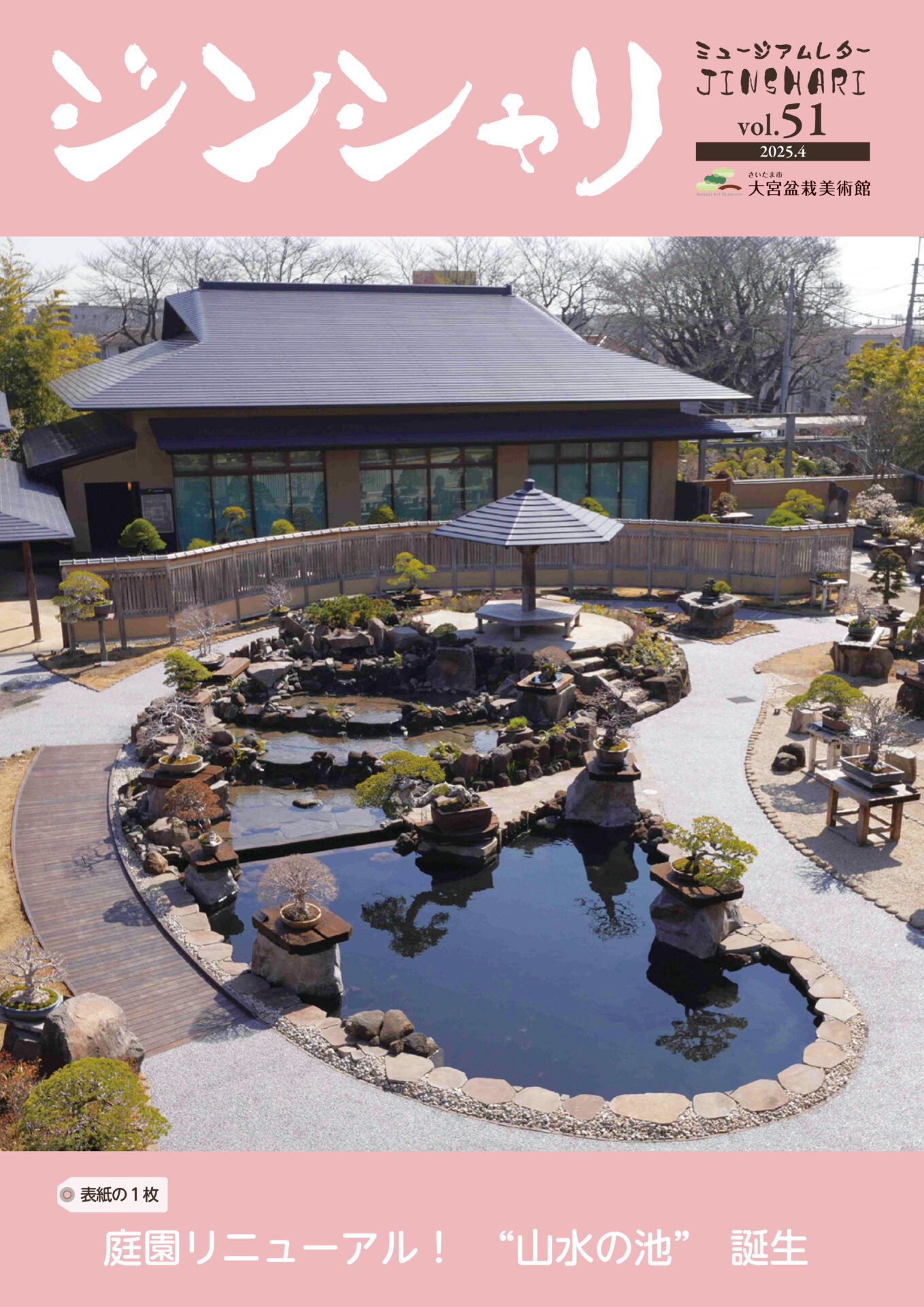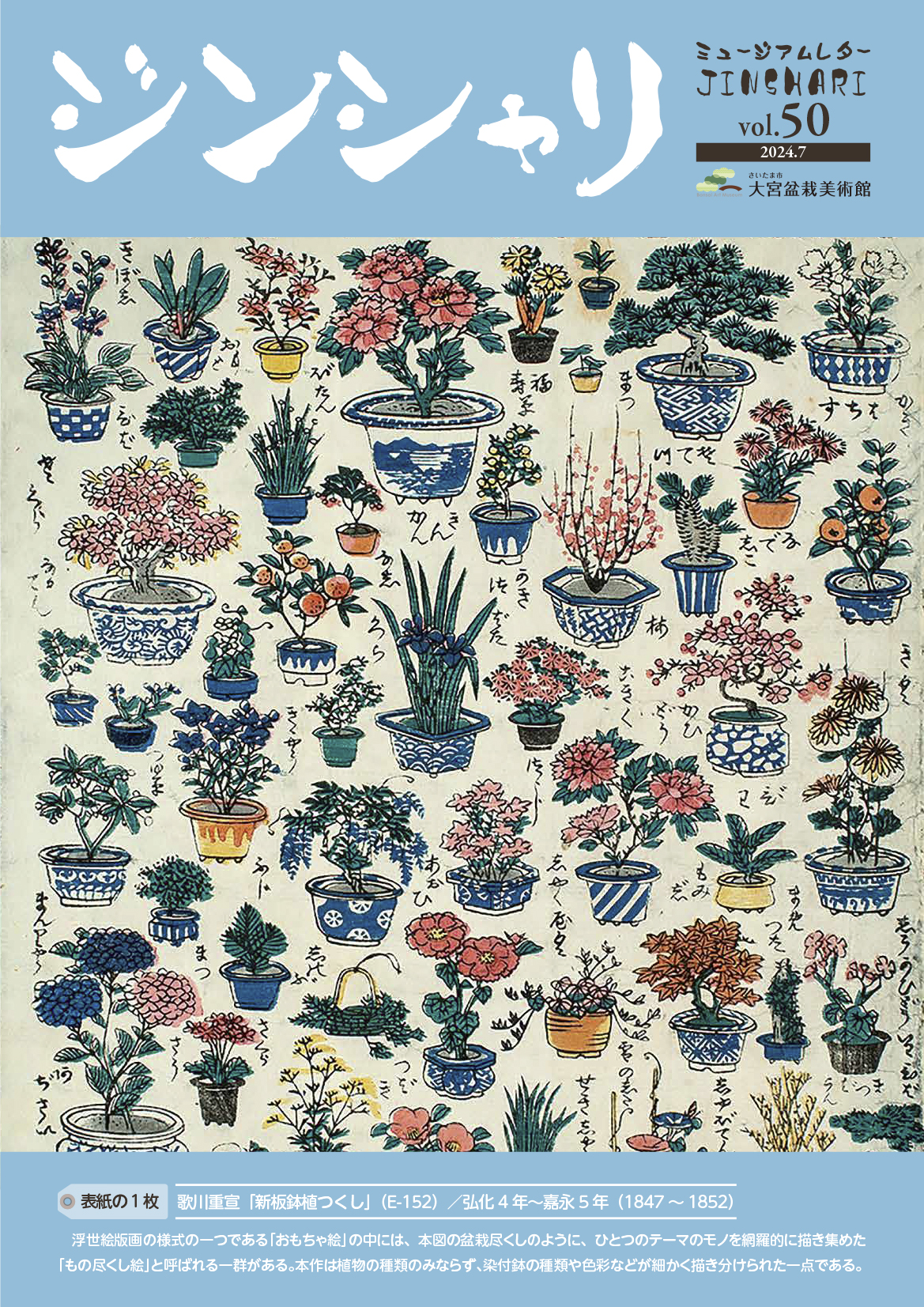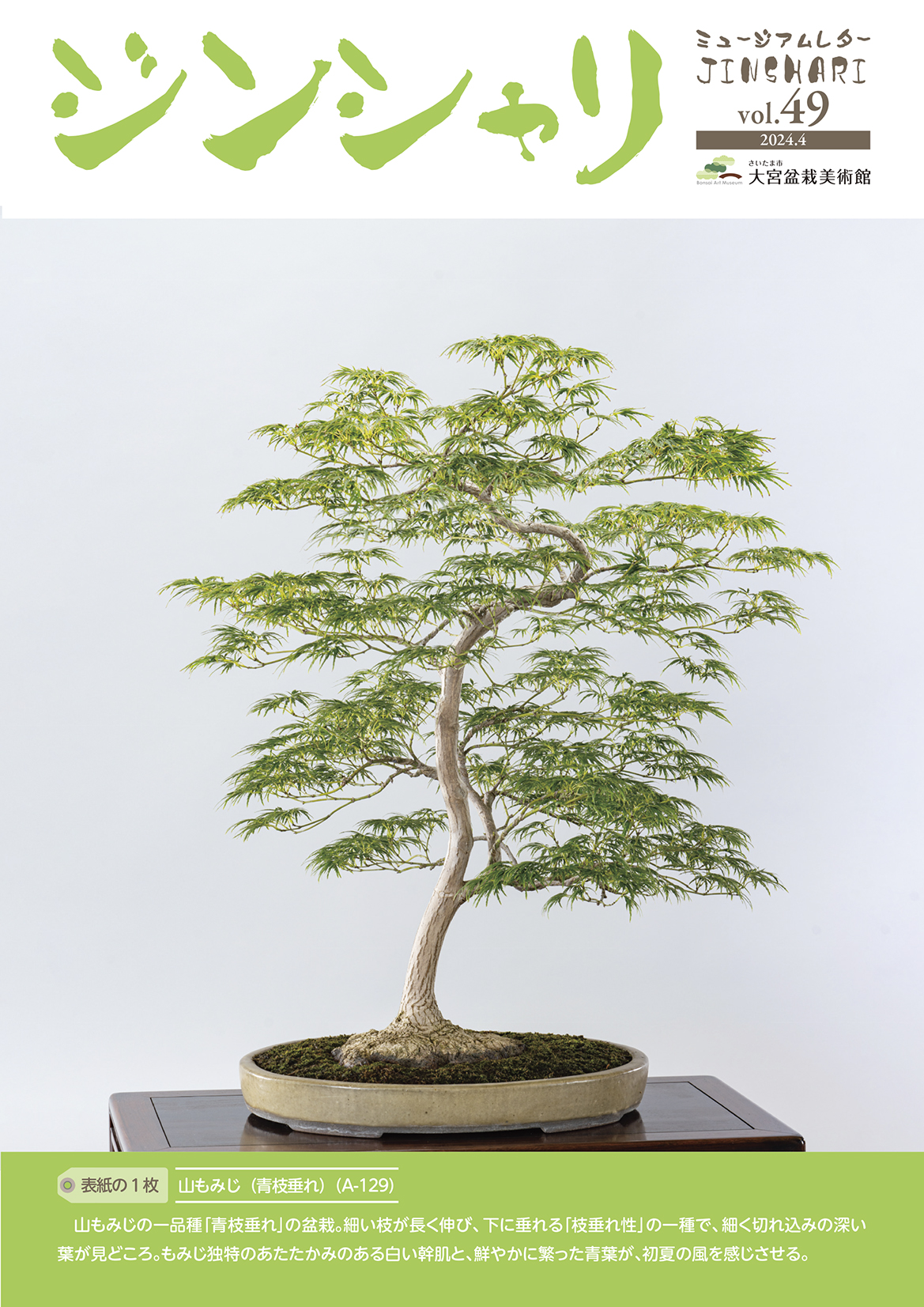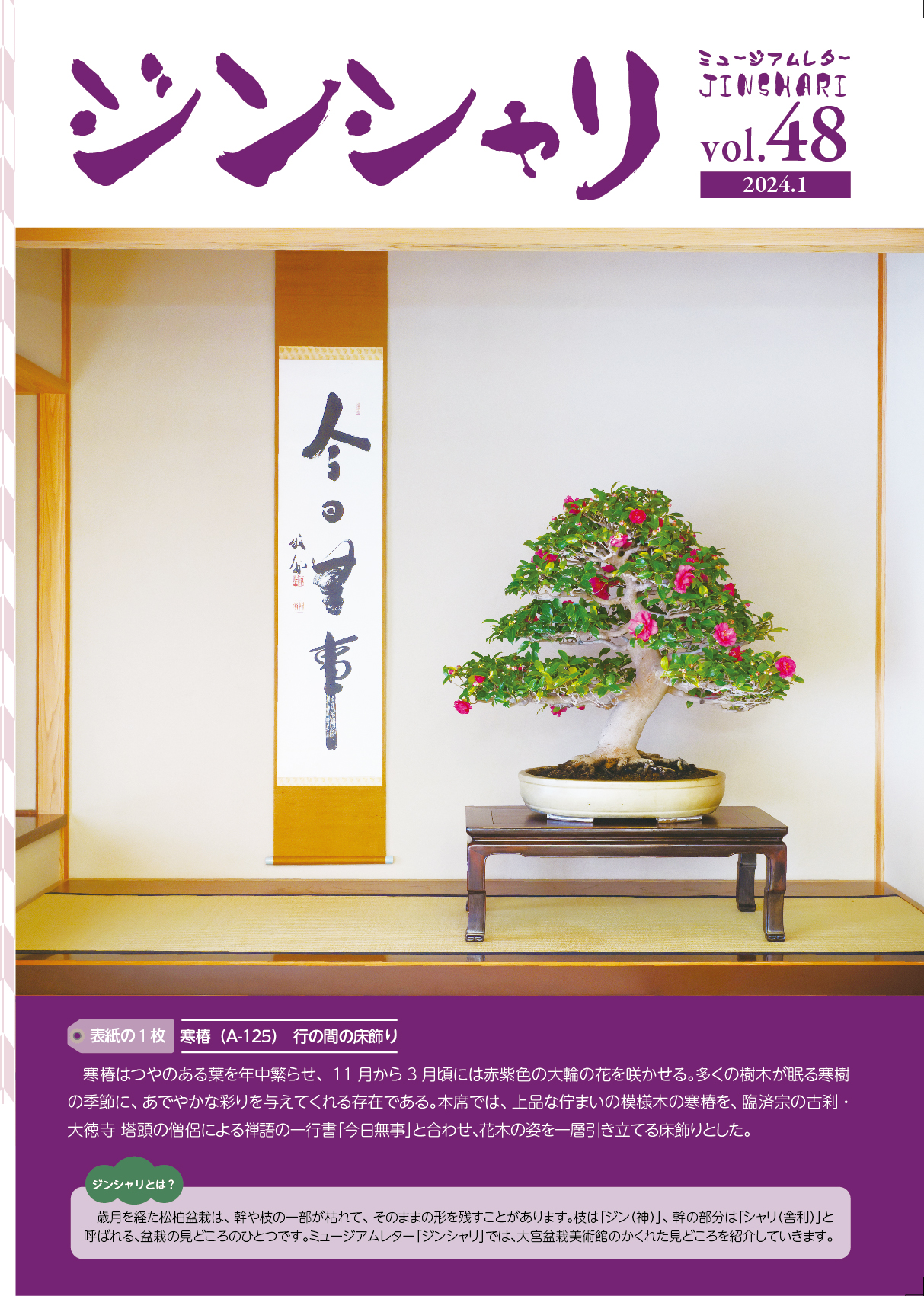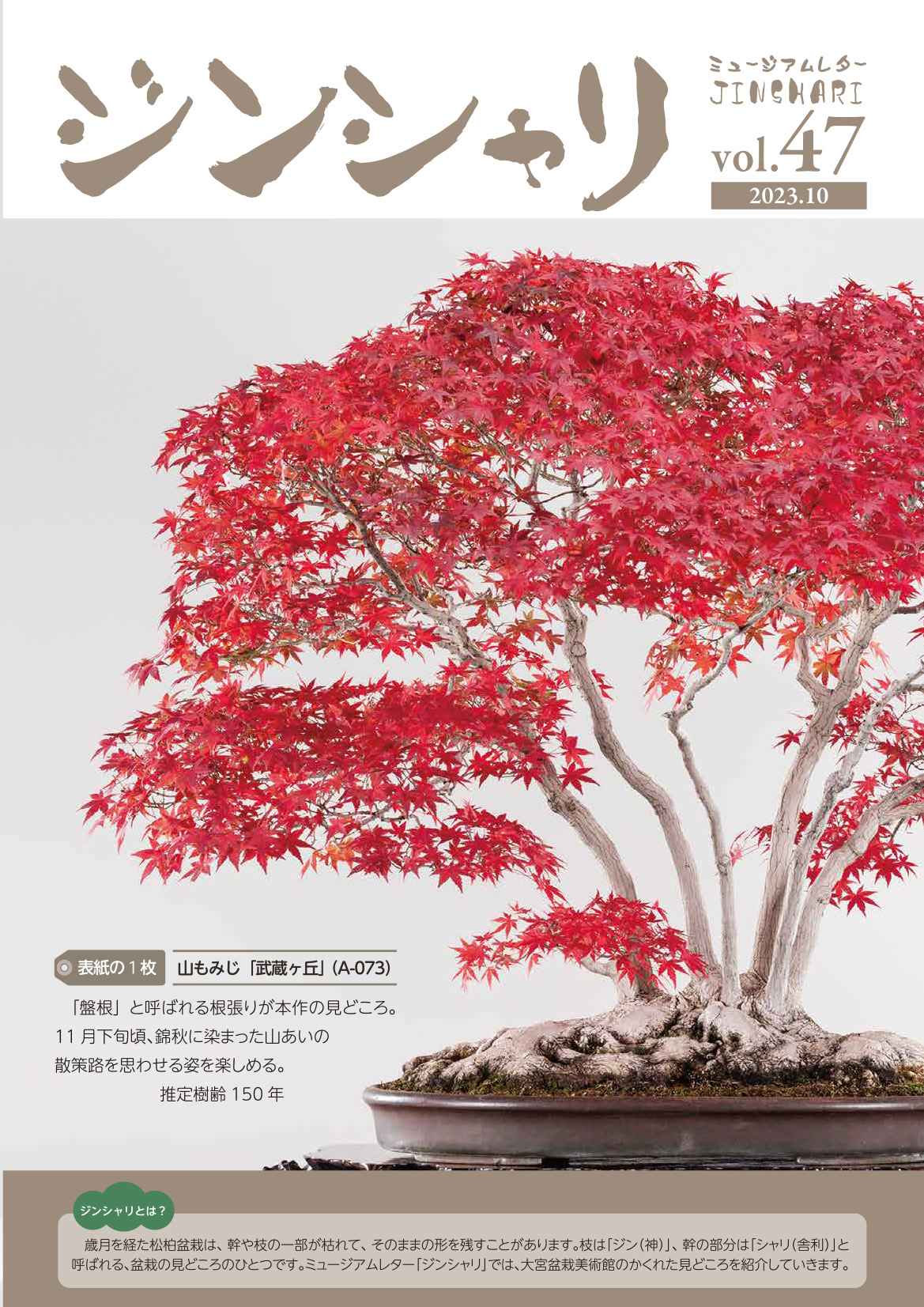Jinshari Vol.47
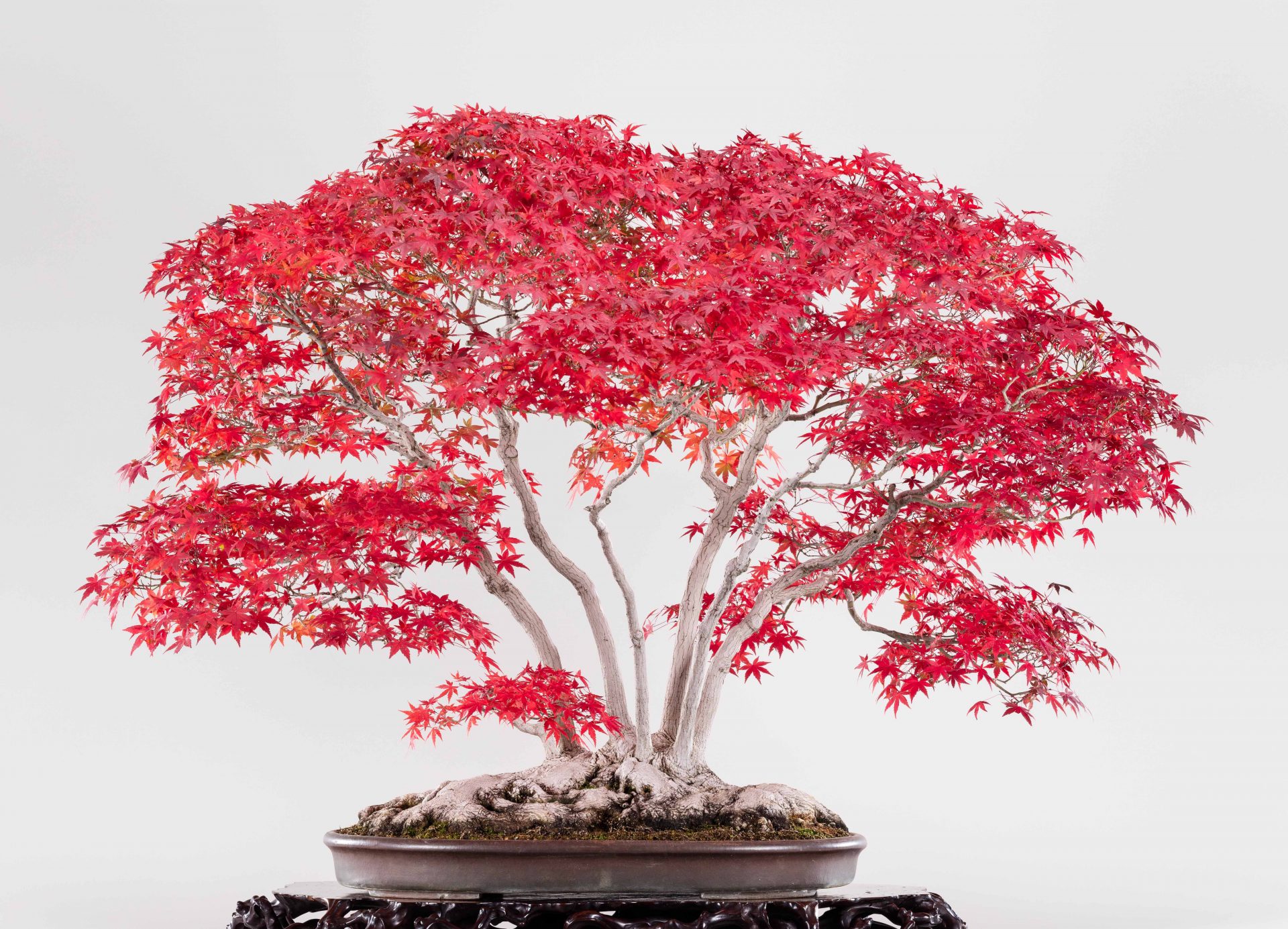
-
【Front Picture】Japanese Maple named “Musashi-ga-oka” (A-073)
A highlight of this piece is the bankon, a bonsai term meaning the rock-like formation of roots adhering tightly to the earth. During November, this piece reminds the viewer of the scenery during a mountain stroll.
Estimated Age: 150 years
Behind the Exhibits
Japanese White Pine named “Higurashi” – Masterpieces have Neither a Front Nor a Back
From Thursday, November 23 to Wednesday 29, 2023, we will be displaying the Japanese white pine named “Higurashi”. As this tree has a pride of place in this museum, being one of the most treasured bonsai in the bonsai world, t will be displayed for one week only during the autumn, when its foliage most beautiful.
In the bonsai world there is a famous phrase, “masterpieces have neither a front nor a back”. Usually, bonsai have a front side that is best for viewing, however as Higurashi is beautiful from both its front and its back, this phrase was said to have been born. This tree with an estimated age of 450 years is a masterful “twin trunk” bonsai that demonstrates a perfect balance between its two splitting trunks. So just how does this tree have such a perfect form?
This piece is a yamadori Japanese white pine, meaning it was taken from the wild. It seems to have been first trained into a bonsai in 1933 (Showa 8) by its first owner, a bonsai artist from Ehime Prefecture. In the 90 years since then, this bonsai has been passed down into possession of 12 different owners, including this museum. So this tree was reformed many times as the owner and bonsai nursery which cared for it changed in order to bring out the potential which lay hidden inside of it. During these changes, which side was the front and which side was the back changed four times.
The front of this piece right now has the larger of the two trunks, or the “parent trunk”, on the right-hand side. This is the same as it was when it was first turned into a bonsai during the Showa period. However there have been two times in the past where the “parent trunk” has been placed on the left, making this tree’s front side be what the back side is now. As a result, this tree has been tailored in such a way that it can be beautiful from both the front and the back.
“Higurashi” has been able to ascend into a more refined form through the work of those people who have been captivated by it over the years. We very much hope you enjoy the form of this tree this year.
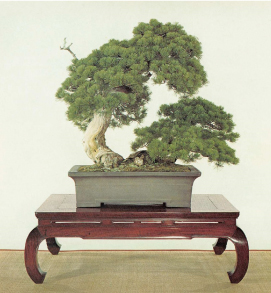
“Higurashi” during 1975 at the 49th Kokufu-ten Bonsai Exhibition” (Nippon Bonsai Association, 1975)
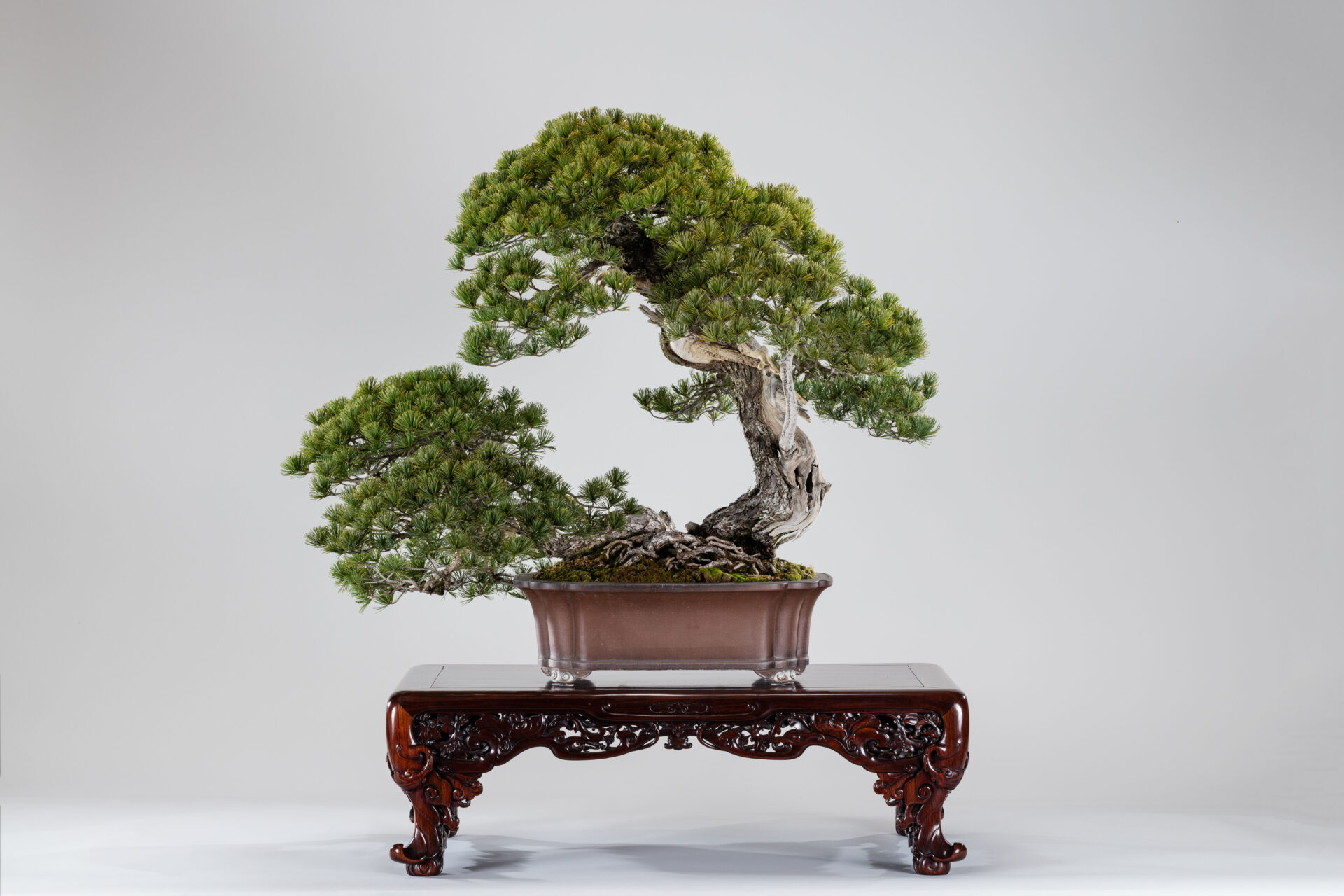
“Higurashi today”
[Related Page] Goyo-matsu (Japanese White Pine) named "Higurashi"
Artist’s Work
Training through Wiring
Now that the summer is over, the work of our bonsai artists will increase. In this issue we want to introduce to you how bonsai artists use wiring to manipulate the branches and trunk to change the shape of bonsai.
Training using wiring like those that are used today appears to have started during the mid Meiji period (late 19th century). With the spread of bonsai, this new way of improving the value of a bonsai in a short time period also spread. This also created a number of improvements to wiring techniques.
Copper wire and aluminum wire are what are mostly used today, but at the time only copper wire existed. When annealed, copper wire becomes soft, meaning that it can be bent freely and wrapped around branches. Bonsai artists found that by wrapping the wire in paper they could prevent the rust from the wire from damaging the trunk and branches.
On first glance, wiring may look like it is a cruel act done to a tree, but artists will say that it is actually training a potted tree to appear like a tree would in a natural environment. This became a very important technique for bonsai artists as it allowed them to freely present a bonsai like it is surviving through the harshness of nature such as being pummeled with rain, strong winds and snow. There are however some species such as Ezo spruce which do not like being wired. As such, at this museum we are careful to see which bonsai can and cannot be wired while caring for them.
Some of the objectives of wiring a bonsai can be seen below:
① Training a bonsai to bring out its character
② Fixing weak points or issues in the bonsai
③ Styling a tree to how one imagines it
④ Lowing the branches on the surface to let the weaker ones behind them grow more (called (fusekomi)
As they are used for numerous purposes, a great amount of experience and knowledge is important for wiring. The sublimely arranged branches of a bonsai are crafted by the unique techniques employed by bonsai artists.
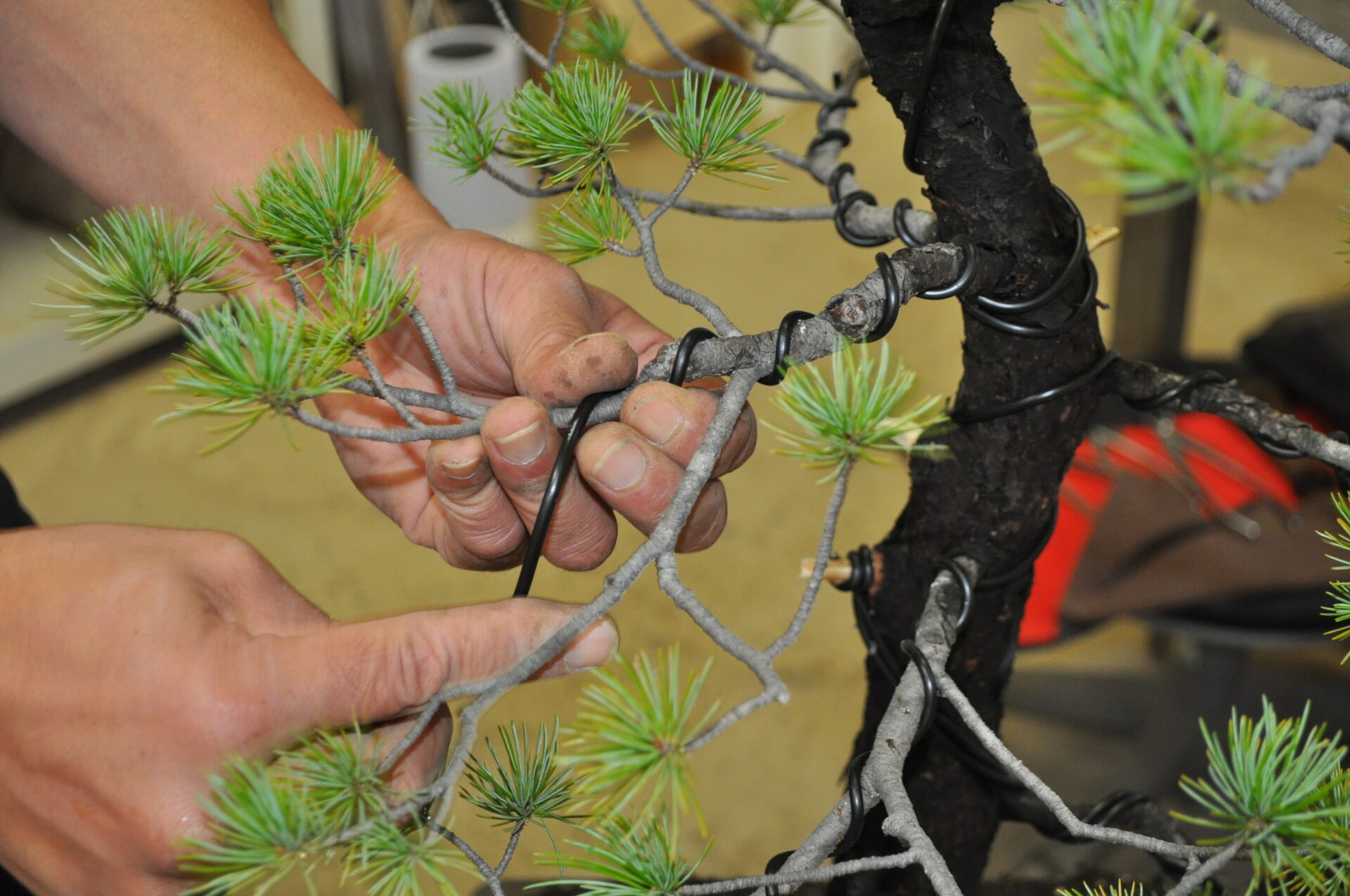
Wiring a branch of a Japanese white pine.
Supporter Reporter
Bonsai Academy – Growing with its Students
【Numerous events at the Omiya Bonsai Art Museum are ran together with the Museum Supporters, a group formed by volunteers. In this issue, a Supporter will tell us about the Academy, one of the 5 activities which the Supporters take part in. 】
・・・・・・・・・・
Students who have finished the Saitama International Bonsai Academy Intermediate Course participate actively in the Academy as Supporters. Our two main activities are: Supporting Bonsai Academy Classes and displaying pieces for Golden Week.
The Supporters at this museum are only just upper classmen of the Academy compared to the current students, but we are all still trying to solve the mysteries of bonsai ourselves. We get to struggle together with the students of the Academy and grow with them.
During Golden Week, we also display bonsai of students who have completed the Bonsai Academy in the Museum Lobby. This display returned me to the basics and made me remember that bonsai are made to be viewed. I think this bonsai display will service as a large goal for students who participate in the Bonsai Academy. Guests who viewed this display asked how to join the Bonsai Academy, so I was happy to see that this has helped to bring more people to bonsai.
Supporter – Etsuko Sato
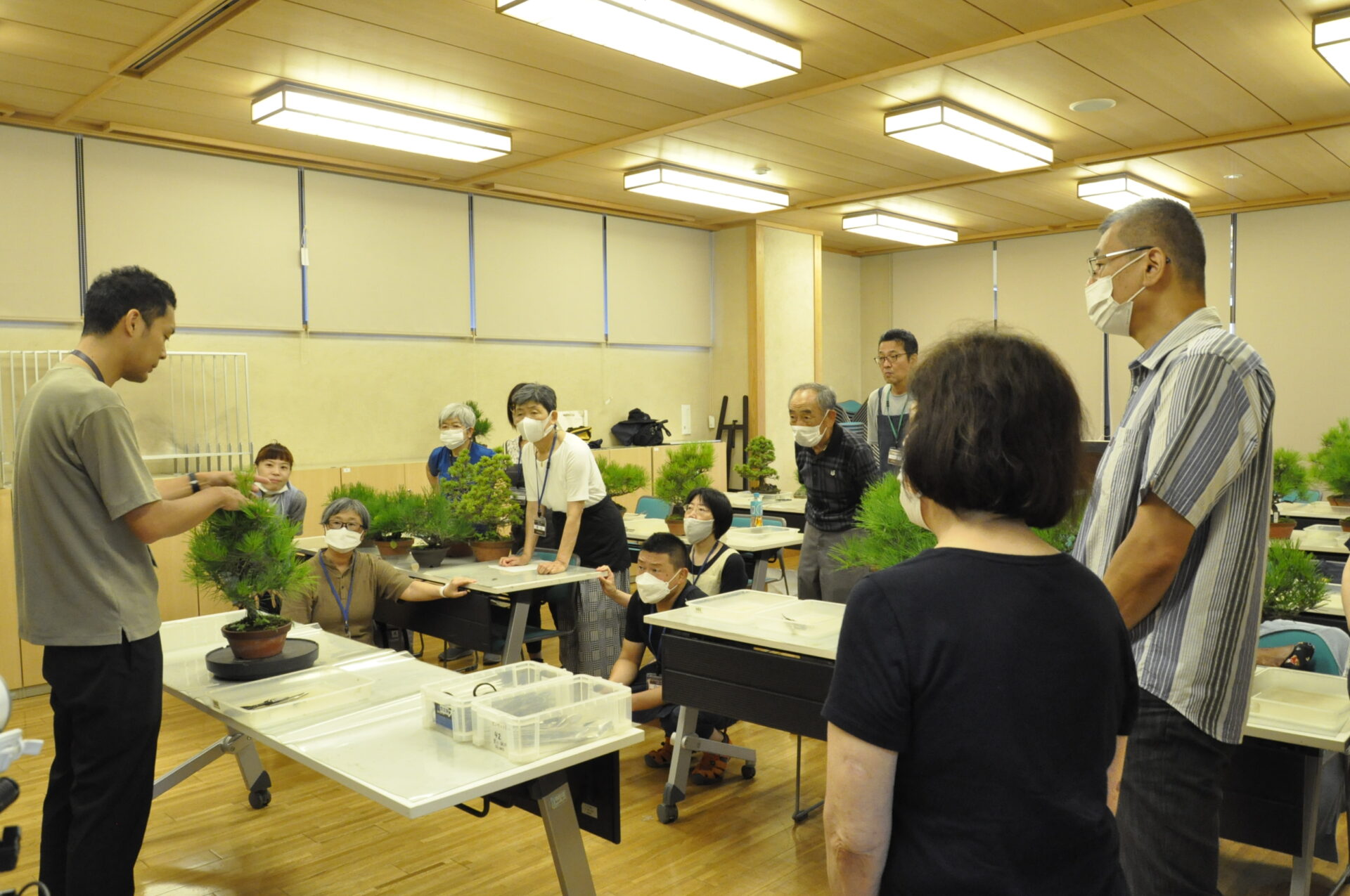
Academy - Supporter Training
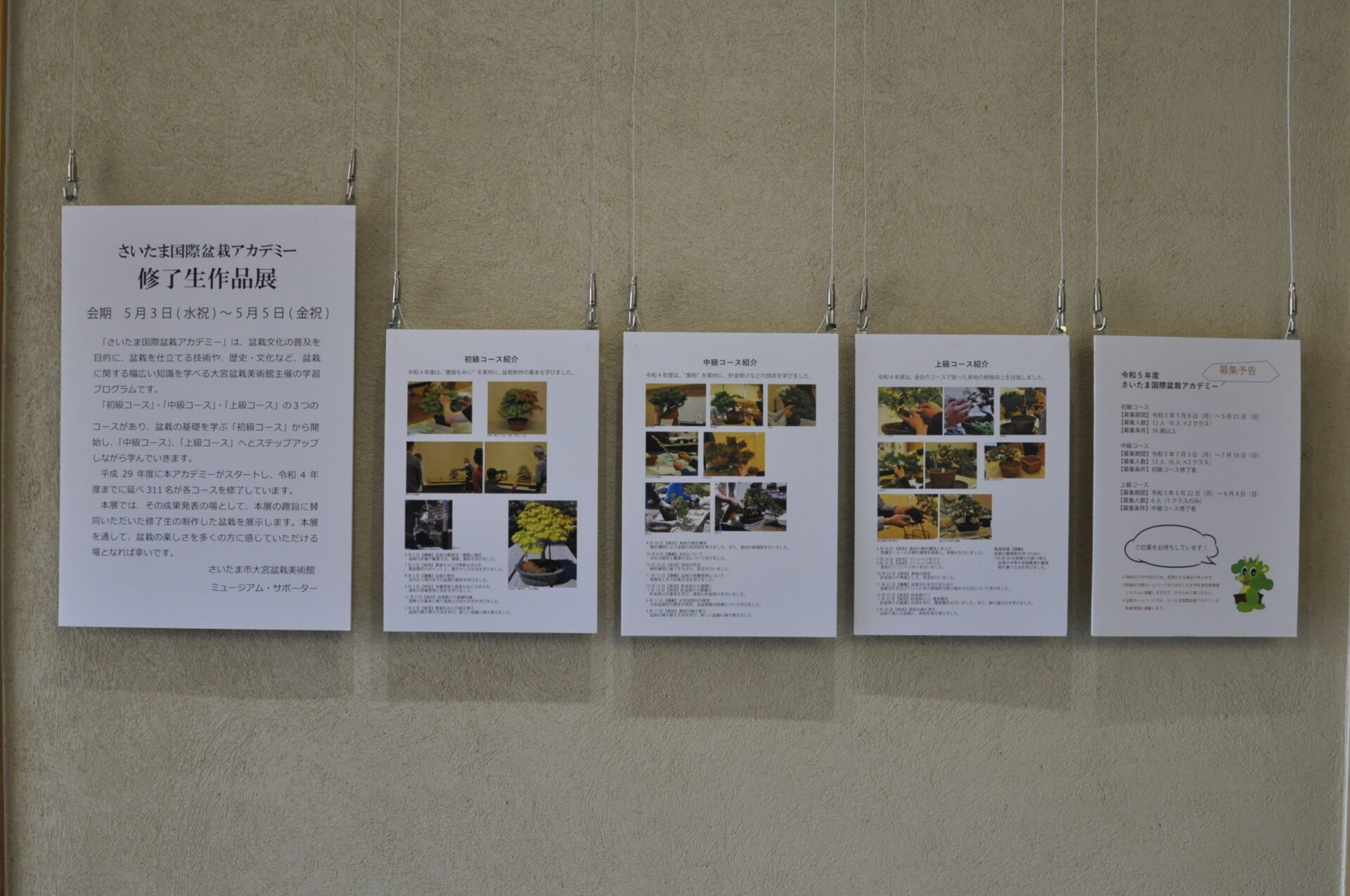
View of the Graduated Student`s Display 1
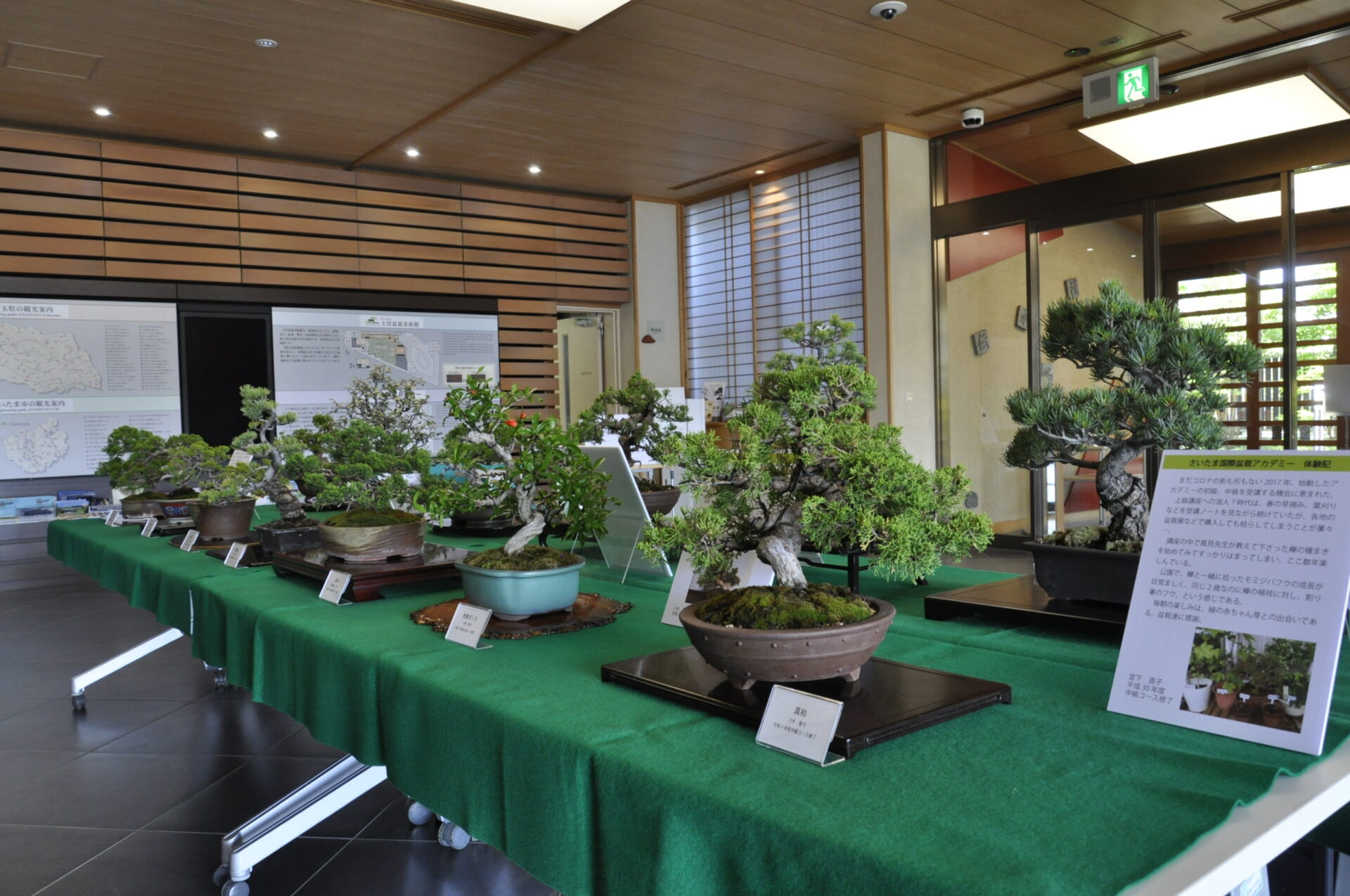
View of the Graduated Student`s Display 2





